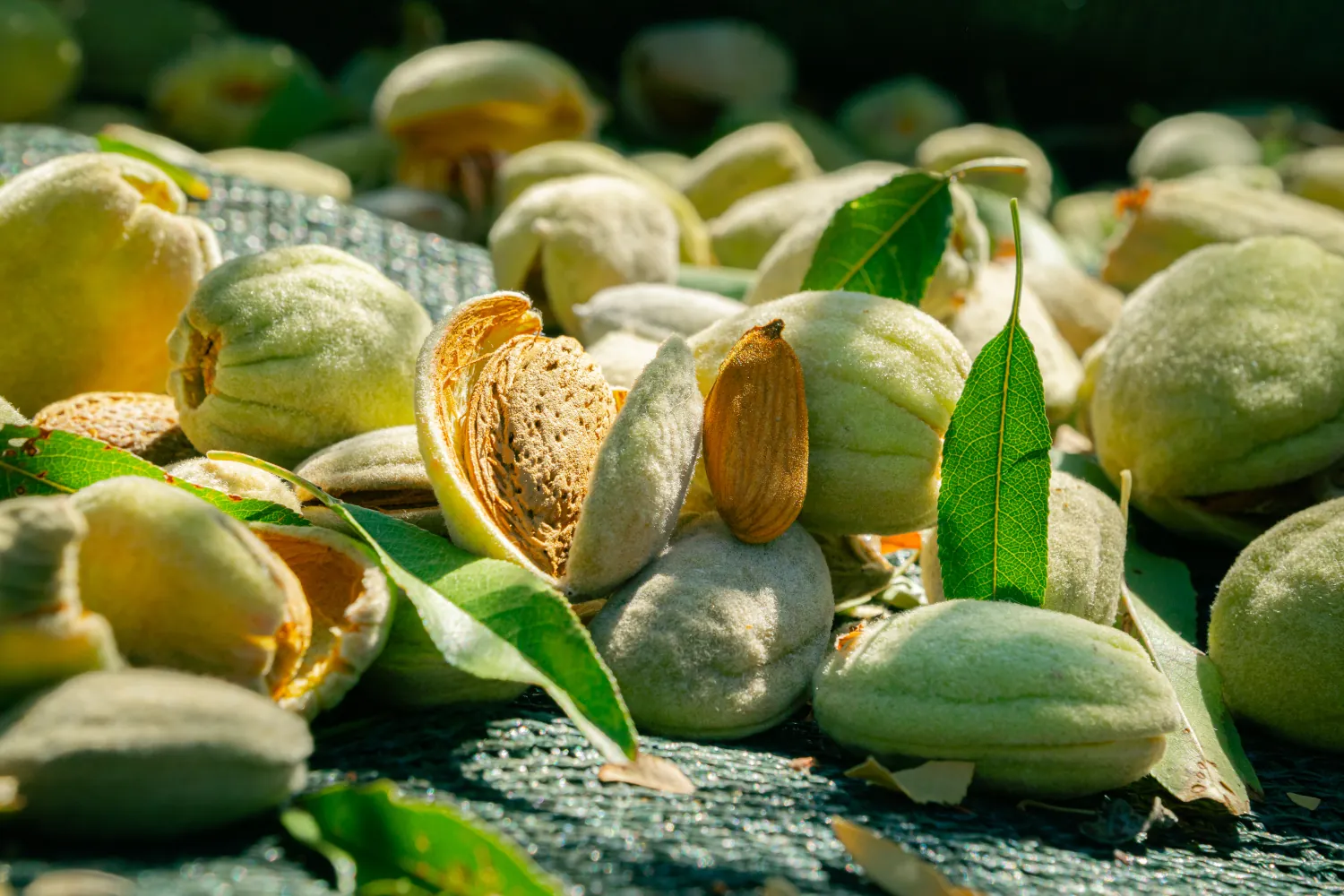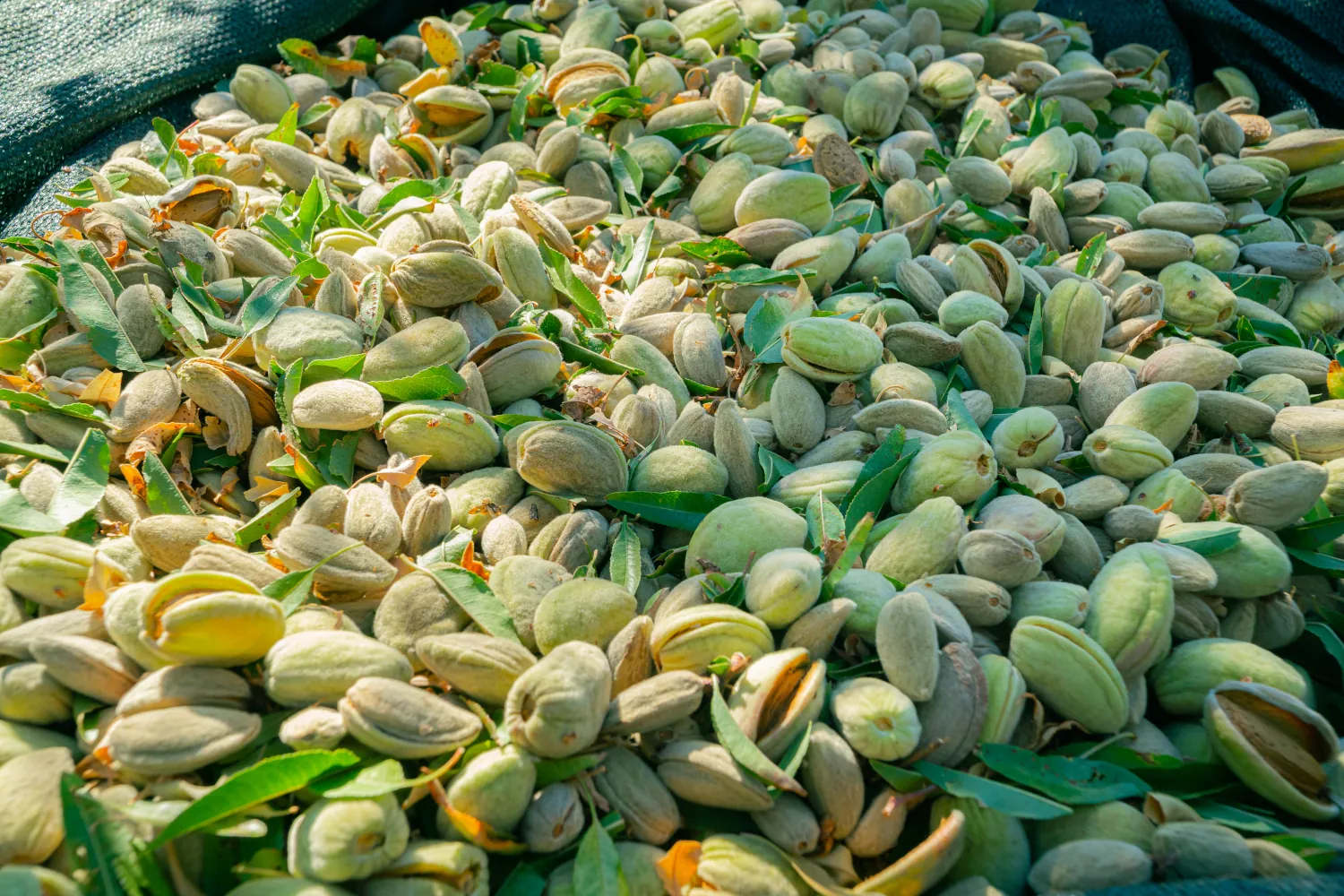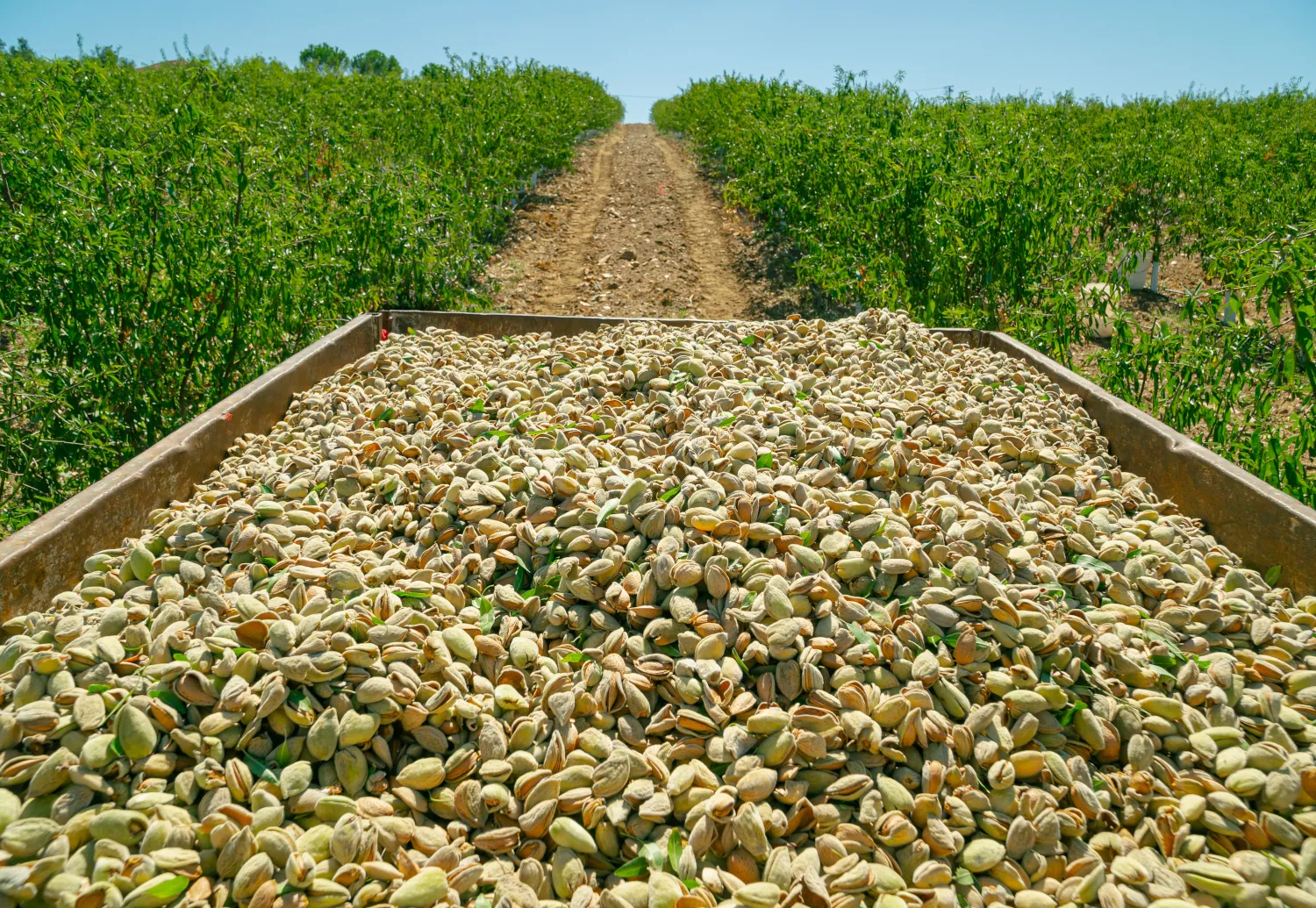Agro Invest Spain Almond Harvesting Results
There is a rising global trend in the consumption of almond milk, almond butter, snacks, confections, and bars as more studies reveal the nut’s nutritional advantages. So, it is no surprise that almonds rank as the second most popular nut globally, coming in second to peanuts. But how do almonds grow? Except for the peanut, all nuts are tree-grown. Almonds are a native of the Mediterranean region and Central Asia, where they can also be found on trees. Today, almond trees grow in California, Europe, Africa, and Asia. Next to the United States, Spain is the world’s second-largest producer of almonds. That’s why we selected the fertile Extremadura region as home to our almond plantations. This decision has paid off as almond harvesting time is finally here, and we are seeing great results!
How do Almonds Grow?
Believe it or not, almonds (prunus dolcis) are not nuts. Instead, they are stone fruit, also known as a drupe. Like a peach, a stone fruit has a seed enclosed in a fleshy covering. The fleshy casing of almonds is edible, whereas the seeds of peaches are not edible. The essential part of almonds is inside, namely the seed or nut, not the fleshy exterior.
The almond tree is the earliest-blooming stone fruit tree and is beautiful when it blossoms. Almond trees can reach heights of 10 to 15 feet and bloom in early spring with fragrant pink or white blooms. The optimal climates for almond tree growth are clement, rainy winters, and warm, dry summers, such as in Mediterranean climates. The trees can withstand droughts but do not do well in frosts. Almond trees are a terrific choice if you’re searching for a tree that produces many nuts; one tree can generate between 50 and 65 pounds of nuts annually.
When to Harvest Almonds
Due to their 6- to 8-month maturation period, almonds are often harvested in commercial plantations throughout August, September, and October. To determine when to harvest almonds, you must keep an eye on your drupes. Firstly, the outer shell of the almonds dries and turns brown. After this, the hulls begin to split, and the trees are ready for harvesting. The best practice is to wait until about 75% of the hulls have broken before harvesting. Making sure you don’t only inspect your trees at eye level is critical advice. When you notice they are ready, it could be too late as almonds mature from the tree’s highest point downwards.
Almond Harvesting Time in Plasencia
Our farming team managed by Agro Invest Spain is currently hard at work in our plantations in Plasencia. Following a summer of meticulously cultivating the almond trees, it is time for harvesting, and work is underway. But how are almonds harvested? Traditionally, almonds were harvested using large poles to gently shake the trees and ground sheets to catch the fallen nuts. However, we have invested in advanced technological equipment, so our specially trained farmers use a specialist machine for harvesting to minimize tree damage. The almond harvesting machine gently vibrates to shake the almonds from the tree and catches them in a sizeable umbrella-type fixture before they fall to the ground. Following this process, the hulls of the nuts are immediately removed after harvest to preserve the almond’s freshness. That’s where our state-of-the-art almond processing factory comes into play.

Our Almond Processing Factory
This year we will launch our new almond processing factory, the largest one in the region, dedicated to our investors. Our factory processes the harvest of our investors employing cutting-edge technology and an advanced machine line, resulting in the best possible quality standards. After processing the harvested almonds, we package them and market them internationally.
The almonds journey begins on the plantation and continues in the vehicles to our factory, where the processing begins. Firstly, the almonds pass through a grading machine that classifies almonds by size. Secondly, the size-organized almonds are fed into the hopper. A roller then crushes the almonds, which separates the kernels from their shells. The almonds then pass through a screening machine to separate the nuts from the husks.
Spain Harvest Season Results
We are pleased to report that our growing season was a great success, and the harvesting season is wrapping up similarly. Our plantations in Extremadura, Spain’s most productive agricultural region, have thrived over the past two years and have produced an excellent yield of healthy almonds.

Invest in Agriculture with your own Almond Plantation
Our experienced team has planted over 12 million square meters of almond and walnut farms, so we have great expertise and knowledge of the industry. We’re continually exploring methods to use our sustainably maintained farmlands to give our investors the best results. Agro Invest Spain has developed original investment strategies and ground-breaking agricultural technologies to help us place social and environmental considerations at the center of our corporate operations. With the help of our skilled team, development, and operational expertise, we take care of the environment and our investors. As a result, we offer you a simple, hassle-free alternative for investing. If you want to learn more, you can join our webinar series. Contact us to discover our fantastic opportunities to start your agricultural investment journey.
All rights of this content prepared by Api Group Agro Inversiones SL (“API Group”) belong to API Group. These rights are protected and the partial or complete copying, reproduction, distribution, processing or use of the content in any way without permission and without reference will result in legal and criminal liability of individuals.

